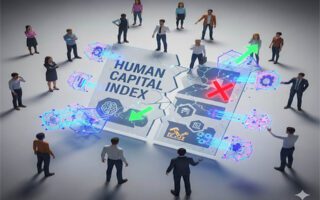“What once felt strategic may now be fragile. To put all eggs in one basket or not? That dilemma no longer defines smart strategy—adaptability does.”
For decades, putting all your eggs in one basket was considered efficient. Businesses centralized operations, streamlined supply chains, and built loyalty around exclusive platforms. In stable environments, this strategy worked—it reduced complexity and maximized control.
But in today’s AI-powered economy, where platforms evolve weekly and automation reshapes entire industries, that basket may no longer be enough.
⚙️ Why the Single-Basket Strategy Worked Before
In traditional business environments, concentration offered clear advantages:
- Vertical integration reduced vendor friction and improved margins
- Exclusive partnerships built trust and predictable outcomes
- Unified software ecosystems simplify training and collaboration
- Focused investment allowed deeper specialization and cost control
Efficiency was defined by control, consistency, and scale.
🌐 Why It’s Risky Now
The age of AI and digital acceleration has changed the rules:
- Platform volatility: AI tools update frequently; a single change can disrupt workflows
- Homogenized outputs: Generative tools often produce similar results, eroding brand distinction
- Overreliance risk: Businesses dependent on one provider face exposure to outages, pricing shifts, or ethical misalignment
- Blind spots: AI models may not reflect local nuance, especially in Filipino contexts
What was once efficient now risks rigidity.
🔗 Value Chain Thinking: A Smarter Alternative
As explored in Value Chain Thinking for Poverty Alleviation, resilience comes from understanding how each part of your business contributes to value, not just output.
In the AI era, this means:
- Mapping dependencies: Know which tools, teams, and data sources drive each stage
- Diversifying inputs: Use multiple AI models, human oversight, and community feedback
- Building redundancy: Ensure no single failure point can collapse your operations
- Localizing strategy: Integrate Filipino cultural insight, language, and customer behavior into your systems
Value chain thinking helps you see the basket not as a container, but as a network.
🧠 Strategic Recommendations
To stay competitive and resilient:
- Avoid tool monoculture: Use varied platforms for design, writing, analytics, and customer engagement
- Train for adaptability: Build teams that can pivot across tools and workflows
- Document processes: Ensure business continuity even if a platform changes or disappears
- Balance automation with human judgment: AI can assist, but strategic decisions need context
🐾 Final Thought
The age of AI is not just changing how business is done—it’s changing how risk is defined. Efficiency used to mean putting all your eggs in one reliable basket. Today, it means knowing which baskets are real, which ones are rented, and which might disappear overnight.
AI is powerful, but it’s not infallible. And in a world of fast-moving tools and shifting norms, putting all your eggs in one basket is no longer strategic—it’s risky.
The future belongs to businesses that diversify intelligently, adapt quickly, and build value across the chain.
Don’t just automate. Architect.
📚 Sources
- BCG – Southeast Asia’s AI Potential
- AIWhyLive – Value Chain Thinking for Poverty Alleviation
- AIWhyLive – Algorithm vs Your Brain: Filipino Choices
- AIWhyLive – AI Nation Rising: Why the Philippines Is Surging Ahead in the Global AI Race
- AIWhyLive – Monetizing Stupid in the AI Era
- AIWhyLive – Algorithmic Morality: When AI Doesn’t Share Filipino Values
- AIWhyLive – Mental Poverty in the Age of AI
- Statista – AI Adoption and Platform Dependence







